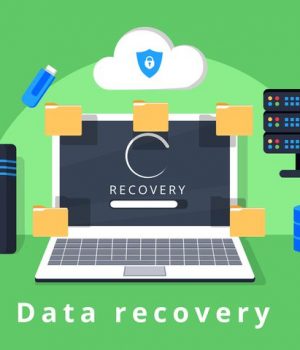There are multiple effective ways to automate your custom software development process. Introducing automation into your software development life cycle (SDLC) is one of the most effective ways to accelerate product delivery, amplify code quality, and drive deployment velocity. It cannot be stressed enough how important it is to understand the fundamentals of software testing when developing software. With continuous advancements in artificial intelligence (AI) and machine learning (ML), it has never been easier to automate your custom pipeline. As an experienced developer, following these techniques help you to streamline repetitive tasks and eliminate the risk of human error. To help you get started, read on to learn about how to automate your custom software development process.
Follow DevOps Principles
First and foremost, it is important to follow DevOps operating and cultural principles. Simply, DevOps encourages the cross-departmental collaboration of your operations and development teams. Through this strategic integration, teams can better communication, collaboration, and promote automation. To help you accelerate your process, you can leverage advanced DevOps tools that help you establish a fully automated, end-to-end development pipeline. This way, you can maximize resource utilization, promote operating system scalability, and empower innovation. Naturally, this helps you drive greater levels of availability, scalability, and visibility into system outcomes. Surely, following DevOps principles is essential to automate your custom development pipeline.
Leverage Containerization Tools
In addition, consider leveraging robust containerization tools. There are plenty of next-level containerization resources that help you promote automation, productivity, and overall efficiency. For example, you can use Container registries by JFrog as a single access point to manage, organize, and control all of your Docker images. This way, you can control who has access to what, scan for vulnerabilities, then make patches as needed. Simultaneously, this empowers you to require authentication of users, as well as for individual images. Certainly, leveraging containerization tools is an excellent approach to automate your SDLC.
Automate Software Testing
Next, you can always choose to automate your software testing procedures. Start off by determining what test cases you would like to automate. Ideally, you should select quality assurance (QA) procedures that tend to cause a human error, require multiple data sets, or run in incredibly high-risk conditions. Then, you can select a dependable tool for testing automation. Once you have done so, you can divide your AI testing responsibilities across multiple QA specialists. This way, you can begin producing good, high-quality test data. Absolutely, automating your software testing is an excellent method to drive efficiency, productivity, and quality across your pipeline.
Work With Sustainable Software Design
Of course, it is increasingly important to work with sustainable software design. Essentially, the sustainable design aims to enhance product conception and environmental performance throughout the software life cycle. In addition, these tools often include embedded self-diagnosis, repair, and restoration abilities that are conducted through automated artificial intelligence rule sets and machine learning algorithms. This way, you can increase productivity, ensure efficient resource usage, and drive product quality. Naturally, these protocols often lead to a faster ROI, lower programming costs, and more efficient planning. Indeed, working with sustainable design is key to drive efficiency and automate your custom software development process.
Implement Deep Learning
Moreover, you should implement deep learning techniques. Simply, deep learning is a subfield of ML that is largely concerned with algorithms that imitate the functions of the human brain. In software development, this can be used for data exploration, preprocessing, as well as deployment. At the same time, these protocols can be used for machine learning modeling, validation testing, and even deployment. Adopting these procedures, you can maximize the utilization of unstructured data and eliminate your reliance on feature-driven programming. Of course, this helps you deliver high-quality products while simultaneously minimizing unnecessary costs. In fact, following deep learning techniques can even reduce your need for software data labeling. Indubitably, implementing deep learning is a promising technique for automation software development procedures.
Final Words
There are several important steps to automate your custom software development pipeline. Firstly, work with strategic DevOps principles. This way, you can better team collaboration, maximize resource utilization, and promote automation. In addition, consider integrating powerful containerization tools. Often, this helps to promote scalability, transferability, and overall security. Next, consider working with sustainable software design, which will help you save time and minimize human errors. Of course, consider automating your software testing procedures. Naturally, this will help to prevent catastrophic emergencies, as well as improve your preparedness for disaster recovery and loss prevention. Moreover, consider implementing deep learning techniques. Follow the points highlighted above to learn about how to automate your custom software development process.
Follow Techiemag for more informative articles.
Table of Contents


![Modern app LTD app [Updated 2023] Modern app LTD app 2021](https://www.techiemag.net/wp-content/uploads/2021/08/shutterstock_copd1-1168x657-1-238x178.jpg)


![[Jan 2024] EZTV Proxy | Unblock EZTV | EZTV Alternatives eztv](https://www.techiemag.net/wp-content/uploads/2020/05/eztv-300x194.png)

![Modern app LTD app [Updated 2023] Modern app LTD app 2021](https://www.techiemag.net/wp-content/uploads/2021/08/shutterstock_copd1-1168x657-1-100x75.jpg)
